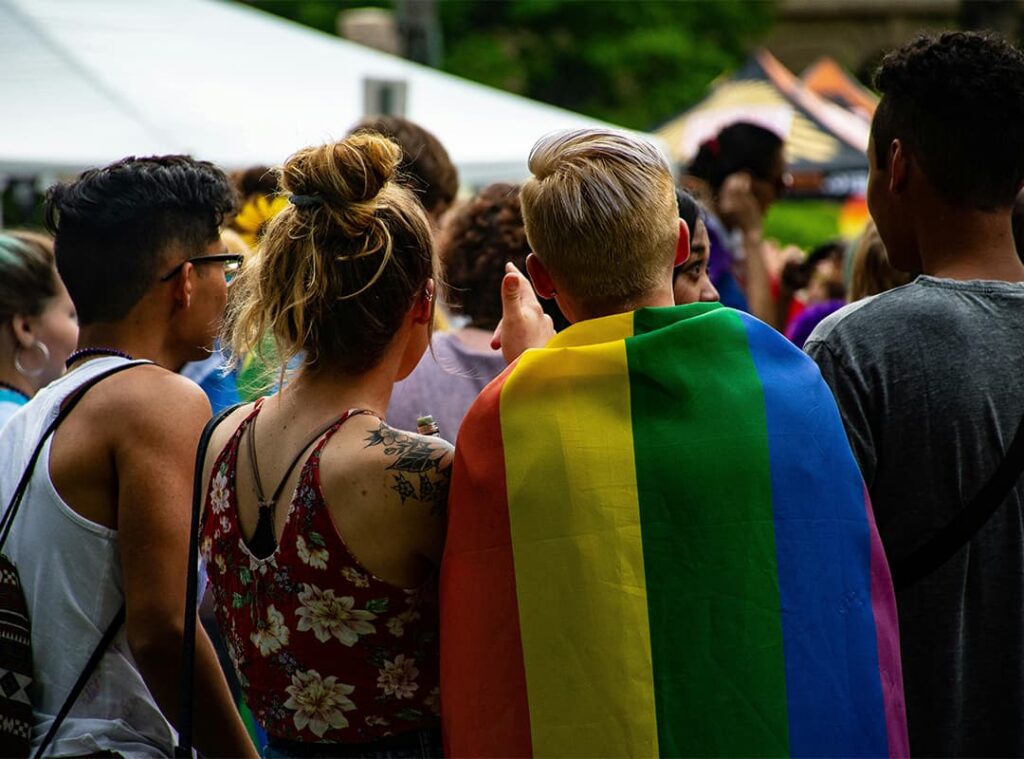Many European-American LGBTQ+ people believe that people of color, especially women, cannot be LGBTQ+. Coming out as gay, lesbian, bisexual, or transgender is a proud assertion of individual identity, a privilege that white people, consciously or not, ascribe only to themselves. People of color are not perceived as individuals, but only as part of a culture of otherness devoid of personalized identity. Consequently, they cannot be gay, lesbian, bisexual, or transgender. Even when Euro-American LGBTQ+ people “accept” their counterparts of color, the latter are often perceived as “not real LGBTQ+” as opposed to white people who are considered “real” LGBTQ+. Exceptions are made only for LGBTQ+ people of color who conform to white expectations of interracial power dynamics, such as a submissive Asian gay man paired with a dominant white man.
LGBTQ+ representation among communities of color
In fact, LGBTQ+ people are widely represented among communities of color around the world. A recent Seattle School District survey found that 27% of black students, 15% of Latino students, and 12% of Asian students identify as queer, compared to 7% of white students. If statistics tell us anything, people of color, at least in Seattle schools, have a higher propensity to be gay, lesbian, bisexual or transgender than white people. This contradicts the common myth that “queerness” is a “white” phenomenon.
Queer history of the non-European world
The presence of LGBTQ+ people in the non-European world goes back to antiquity, just as it does in the European world. While European queer history is taught to the American gay community as the “ONLY” queer history, the queer histories of non-European communities are not taught, creating the false impression that LGBTQ+ people were absent among people of color and that non-Europeans are inherently incapable of being gay, lesbian, bisexual, or transgender. A superficial glance at the history of many non-European cultures will show that this is not the case:
Many Native American nations have a special place for two-spirited people (roughly equivalent to gay/lesbian/transgender). Such people are considered spiritually gifted and often attain high positions as religious leaders. Wehwa of the Zuni nation, a biological male who lived as a woman, was an important leader and shaman.
In pre-Hispanic Filipino culture, women were considered the key link between people and God. A male priest had to appear as a woman to address God. Other Austronesian cultures also include religious functionaries who practice crossdressing, of which the Mahu in Hawaii are a famous example. Polynesian cultures also have a tradition of aikane, male friendships that often have a sexual component.
Among Swahili, male transvestites, known as mashoga, perform as drummers and musicians at women’s festivals.1 Homosexuality is often associated with mashoga. Same-sex behavior in Swahili society dates back to the era of slavery (ending in 1897 in Zanzibar and Tanganyika and 1907 in Kenya), when homosexuality between slave owners and boy slaves was tolerated.2 Female-to-female sexual behavior is also documented in traditional African cultures, including the Ovimbundu and Tswana.
Many descriptions of same-sex attraction can be found in Chinese classical literature. The satirical novel The Scholars contains the episode “Du Shenqin Seeks Beauty,” describing how bored young scholars in Nanjing (who have access to women) go to great lengths to find handsome young men. The famous books “Liaotai” and “Dream in the Red Terem” also contain references to widespread same-sex relationships between master and servant, actor and patron.
Female shamans among the Chukchi of Siberia assumed aspects of the male social role and had wives. Similarly, male Chukchi shamans lived as sociological women and took male husbands or sexual partners.4 In Senegal, crossdressing gay men, called goor-jiggen in Wolof, who played important social roles with female leaders, were traditionally tolerated.
Recognition and support
LGBTQ+ people of color have a right to know their queer ancestors, just as LGBTQ+ white people seek a connection to their history. Connecting to the past empowers and roots people of color in ways that white people take for granted.
It is important for communities of color to not only recognize the diversity and richness of their cultures, but also to support each other in the struggle for equality and acceptance. This includes educating about queer history, representing LGBTQ+ people of all races in media, and creating platforms for intercultural dialog and support. Only together, through interaction and solidarity, can we create a world where every person, regardless of color or sexual orientation, is valued and respected.
